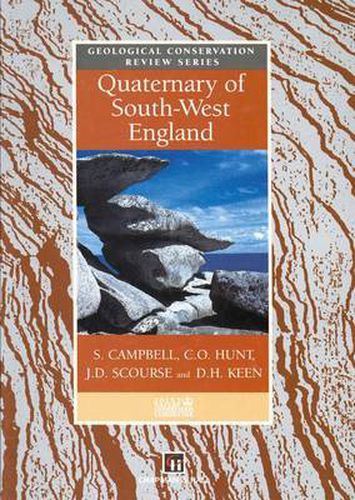Readings Newsletter
Become a Readings Member to make your shopping experience even easier.
Sign in or sign up for free!
You’re not far away from qualifying for FREE standard shipping within Australia
You’ve qualified for FREE standard shipping within Australia
The cart is loading…






This title is printed to order. This book may have been self-published. If so, we cannot guarantee the quality of the content. In the main most books will have gone through the editing process however some may not. We therefore suggest that you be aware of this before ordering this book. If in doubt check either the author or publisher’s details as we are unable to accept any returns unless they are faulty. Please contact us if you have any questions.
STRUCTURE OF THE VOLUME AND TERMINOLOGY USED This book contains scientific descriptions of 63 localities (Figure A) of at least national importance for Quaternary geology, geomorphology and environmental change in South-West England. These sites were selected by the Geological Conservation Review and are accordingly designated ‘GCR’ sites. Chapter 1 provides an introduction to the Quaternary. Chapter 2 synthesizes the geomorphological development and Quaternary history of the region, and outlines the principles involved in site selection. The individual GCR site descriptions form the core of the book. In the following chapters, sites are arranged and described in broad geographic areas and by research topic. This is necessitated by the widely disparate nature of the field evidence in Soutb West England: sites demonstrating the full range of Quaternary and geomorphological features are not evenly and conveniently dispersed throughout the region, and some areas have significant gaps. Neither do the individual chapters contain sites that neces sarily equate with particular site selection networks. Rather, the chosen chapter headings provide the least repetitive means of describing the sites and background material. Where possible, a chronological approach, from oldest to youngest, has been used to describe sites within a given chapter. Again, this approach is not always possi ble, and a group of sites may show variations on landform or Stratigraphie evidence broadly within one major time interval or chronostratigraphic stage; inevitably there are many overlaps.
$9.00 standard shipping within Australia
FREE standard shipping within Australia for orders over $100.00
Express & International shipping calculated at checkout
This title is printed to order. This book may have been self-published. If so, we cannot guarantee the quality of the content. In the main most books will have gone through the editing process however some may not. We therefore suggest that you be aware of this before ordering this book. If in doubt check either the author or publisher’s details as we are unable to accept any returns unless they are faulty. Please contact us if you have any questions.
STRUCTURE OF THE VOLUME AND TERMINOLOGY USED This book contains scientific descriptions of 63 localities (Figure A) of at least national importance for Quaternary geology, geomorphology and environmental change in South-West England. These sites were selected by the Geological Conservation Review and are accordingly designated ‘GCR’ sites. Chapter 1 provides an introduction to the Quaternary. Chapter 2 synthesizes the geomorphological development and Quaternary history of the region, and outlines the principles involved in site selection. The individual GCR site descriptions form the core of the book. In the following chapters, sites are arranged and described in broad geographic areas and by research topic. This is necessitated by the widely disparate nature of the field evidence in Soutb West England: sites demonstrating the full range of Quaternary and geomorphological features are not evenly and conveniently dispersed throughout the region, and some areas have significant gaps. Neither do the individual chapters contain sites that neces sarily equate with particular site selection networks. Rather, the chosen chapter headings provide the least repetitive means of describing the sites and background material. Where possible, a chronological approach, from oldest to youngest, has been used to describe sites within a given chapter. Again, this approach is not always possi ble, and a group of sites may show variations on landform or Stratigraphie evidence broadly within one major time interval or chronostratigraphic stage; inevitably there are many overlaps.